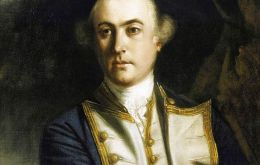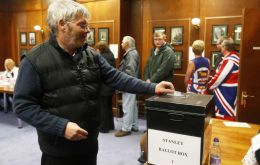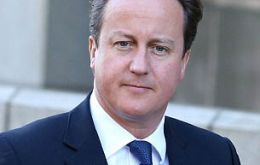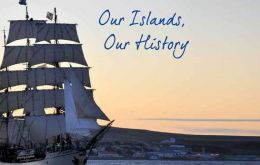MercoPress. South Atlantic News Agency
Tag: Our Islands, Our History
-
Wednesday, December 3rd 2014 - 09:14 UTC
Falklands prepare to celebrate 250 years since the Union Jack was first raised

The Falkland Islands are preparing to celebrate in 2015 is the two hundred and fiftieth year since Britain took possession of the Islands, when on January 23, 1765 Commodore John Byron raised the Union flag at Port Egmont on Saunders Island.
-
Monday, March 11th 2013 - 04:30 UTC
“Fantastic” Falklands’ vehicles rally in support of the referendum and UK

Described as ‘fantastic’ despite the bad weather over 300 vehicles plus motorbikes, quads, old tractors and horse riders flying Falklands flags and Union Jacks turned out on Sunday in Stanley for a march along the sea front and the Liberation Monument in support of the two-day referendum on the Islands future.
-
Tuesday, March 5th 2013 - 19:07 UTC
Young Falkland Islanders’ voice their views

By Harold Briley - Circuited well in advance of their historic referendum on their future, a booklet voicing the views of the post-invasion generation of Islanders is a vital part of the new Falkland Islands campaign to explain their case internationally. In this contribution to the referendum debate, MercoPress takes a more comprehensive look at their attitudes.
-
Monday, January 14th 2013 - 03:12 UTC
Falklands’ referendum: CFK letter to PM Cameron distributed to UN General Assembly members

The open letter sent by Argentine president Cristina Fernandez to Prime Minister David Cameron demanding the return of the Falkland Islands, which allegedly were “forcibly stripped” from Buenos Aires in 1833 will be distributed as a document among members of the UN General Assembly, on request from the Argentine ambassador Maria Perceval.
-
Thursday, January 3rd 2013 - 18:42 UTC
Brief history of the Falklands since first references in the 16th century to 1841

The Falkland Islands, lying about 560km off the mainland of South America, comprise two large islands, East and West Falkland, and a swarm of other islands ranging from substantial ones off the western edge of West Falkland to smaller islets and reefs scattered all along the coasts.
-
Saturday, December 29th 2012 - 15:34 UTC
The spirit and roots of the Falklands in “Our Islands, Our History”

The Falkland Islands Government announced the completion of the booklet “Our Islands, Our History”. The booklet provides a succinct and accessible summary of the key aspects of the history of the Falkland Islands, and of the people whose determination and character have forged them to a democratic, prosperous and dynamic community.
